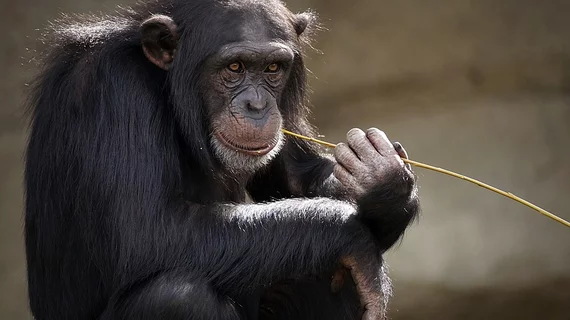Researchers study chimp hearts for clues about CV evolution
Analyzing the hearts of chimpanzees and gorillas offered insight into why human hearts evolved as they did in a recent study out of Harvard, the New York Times reports.
For the study, Daniel Lieberman, an evolutionary biologist at Harvard, and his colleagues spent several years traveling between African nature preserves as they scanned and studied the hearts of dozens of chimpanzees, as well as measuring their blood pressure. Lieberman et al.’s counterparts, based in Boston, passed the time by measuring BPs and scanning the hearts of young men, some of whom were athletes and some of whom were sedentary but healthy. One cohort included subsistence farmers in Mexico.
NYT reporter Gretchen Reynolds wrote the differences the scientists ultimately found between human and chimp hearts were “stark.” Chimpanzee hearts tended to be rounder than humans’, equipped with thicker walls designed to withstand and respond to short bursts of activity.
But while ape hearts seemed to support the primates’ relatively sedentary lifestyle—they rarely run and are largely “strength and power athletes,” Reynolds wrote—the same structure wouldn’t support humans. Lieberman and colleagues found that men’s hearts were more elongated and supple than chimps’, with thinner chamber walls that exhibited far greater plasticity. This suggests human hearts evolved over the years as hunter-gatherers and their successors became more active.
“What these findings suggest as a whole...is that, when human lives diverged from those of other apes so long ago, so did our hearts, with ours evolving to allow us to be in steady, regular, aerobically based motion,” Reynolds wrote.
Read the full story below:

